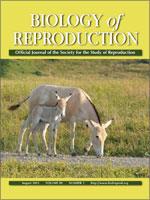The germ cell lineages are among the best characterized of all cell lineages in mammals. This characterization includes precise nomenclature that distinguishes among numerous, often subtle, changes in function or morphology as development and differentiation of germ cells proceed to form the gametes. In male rodents, there are at least 41 distinct cell types that occur during progression through the male germ cell lineage that gives rise to spermatozoa. However, there is one period during male germ cell development—that which occurs immediately following the primordial germ cell stage and prior to the spermatogonial stage—for which the system of precise and informative cell type terminology is not adequate. Often, male germ cells during this period are referred to simply as “gonocytes.” However, this term is inadequate for multiple reasons, and it is suggested here that nomenclature originally proposed in the 1970s by Hilscher et al., which employs the terms M-, T1-, and T2-prospermatogonia, is preferable. In this Minireview, the history, proper utilization, and advantages of this terminology relative to that of the term gonocytes are described.
How to translate text using browser tools
10 July 2013
Toward a More Precise and Informative Nomenclature Describing Fetal and Neonatal Male Germ Cells in Rodents
John R. McCarrey
ACCESS THE FULL ARTICLE

Biology of Reproduction
Vol. 89 • No. 2
August 2013
Vol. 89 • No. 2
August 2013
gonocytes
male germ cells
prospermatogonia




